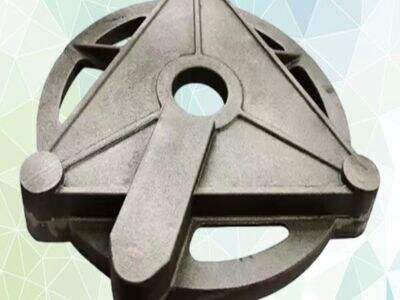Most metals are made into a variety of different materials. One of the two principal materials we work with in metalworking are ductile iron and gray iron castings. This post will get to know more about these two substances, what makes them distinct, and when and why to use each one.
What are Ductile Iron Castings and Gray Iron Castings?
Iron is a a very tough metal which have been in use by humans for many centuries. You realize that it is a heavy metal that is very useful. Iron can do many different things once you liquefy the iron and then you can cast it (pour and shape into molds). The casting process involves pouring melted iron into a mold. In fact, there are two kinds of iron castings which are ductile iron and gray iron and each type is designed for specialty and benefit.
Slightly Different Processes for Ductile and Gray Iron
Ductile iron is the result of adding small percentages of other elements (certain types of metals) to the populations of iron while the iron is melting. Added to that, adding this changes the way the melted iron that is cooled and hardened, hardened it, which can make it stronger and more flexible. Ductile iron is commonly used for manufacturing pipes and gears as well as automotive components due to these properties. These have a lot of weight over them and need to be very strong.
Gray iron, on the other hand, is produced by allowing the iron to cool slowly after melting. This slow-cooling process yields a rigid kind of iron that can stand up to abrasion far better than many other materials. Gray iron is often used for casting engine blocks and brake drums, and other heavy-duty parts that still need to take a beating.
Why Use Iron Castings?
There are multiple advantages of iron castings in different projects. Iron is also very strong, so it can handle a lot of stress. Thus, usage of iron in heavy-duty applications is a great fit as these applications require strength. Moreover, over time, ductile iron can resist wear and tear, so is a good option for parts that will go through a lot of usage, for example, engine blocks and brake drums.
One final aspect of iron that is wonderful is that it is easy to cast. That means it can be cast into molds to create almost any shape that you can dream of. This flexibility enables the production of various items that must conform to certain designs or functions.
While iron castings can offer many benefits, it is important to consider several key factors when using them. One of those is that iron is pretty heavy, so it can be hard to move around. For example, if the project involves moving heavy pieces of iron, you may need a plan for moving them. Iron, in addition to the above, can get rusted if it is not adequately protected. Iron must be painted or protected in some other way in order to prevent rust.
Designing with Iron Castings
As you are designing a project that will incorporate iron castings, there are a few key items to keep in mind. Think about how casting will work, first. Interestingly, it is possible to create iron castings in all sorts of shapes, but the ease of doing so varies. Carefully planning the shape will enable one to cast the piece easily.
You also have to consider how the casting will be positioned or connected to other pieces in your project. The relationship must be strong enough to hold everything in place and work well in unison.
Another important factor is the size and weight of the iron casting. Due to the heaviness of iron, you will want to make sure that the remainder of your project can withstand the density of the iron casting. This is essential for safety and efficiency. Next, think about whether the casting needs to be moved or transported, particularly if you need to haul heavy pieces around. You might need to use specific tools or even machines to do this.
Why Choose Iron Castings?
All types of projects can benefit from using iron castings. They are powerful and capable of handling a lot of tension, which makes them appropriate for heavy-duty activities. That really makes them a known and high-performance major work horse, even in challenging conditions. Iron castings are also resistance to wear and tear, meaning they’re a perfect choice for parts that will see a lot of action over time.
The very best thing about iron castings, however, is that they are relatively easy to make. You can mold them into nearly any shape you can imagine, which makes them a versatile choice for dozens of projects. Iron casting can be used for almost anything from car parts (automobile parts manufacturing) to tools and even artistic sculptors.
Conclusion
To conclude: ductile cast iron; and gray iron castings are two types of iron that are commonly used in many projects. Ductile iron is strong and flexible, and gray iron is hard and wear resistant. Then different types of irons have unique properties that are helpful for various tasks.
Even when working with cast nodular iron in your projects, consider how they will be produced, how they will be properly secured in place and how they will be moved to their placement location. Not only does the cast iron have all those properties to use as reference but more importantly, by taking these points into account you can make certain that iron castings are a great solution for your projects. Ductile and gray iron castings give you many great benefits to achieving anything you are building.

 EN
EN
 CS
CS
 DA
DA
 NL
NL
 FI
FI
 FR
FR
 DE
DE
 EL
EL
 IT
IT
 JA
JA
 KO
KO
 PL
PL
 PT
PT
 RU
RU
 ES
ES
 TL
TL
 ET
ET
 TH
TH
 MS
MS



